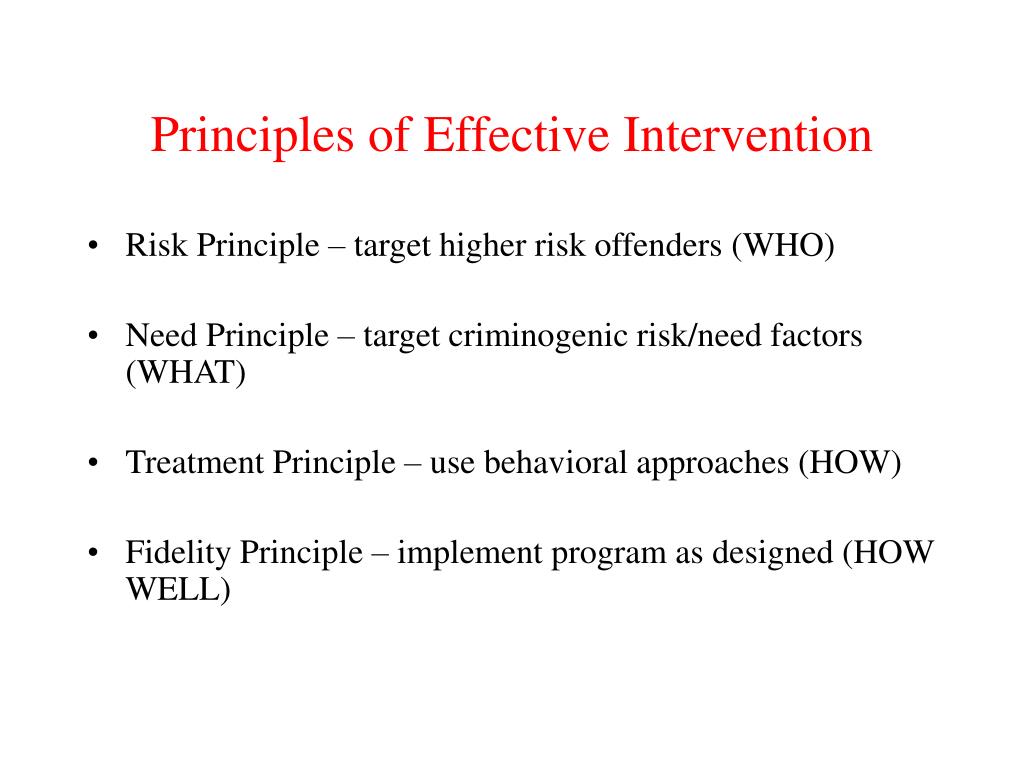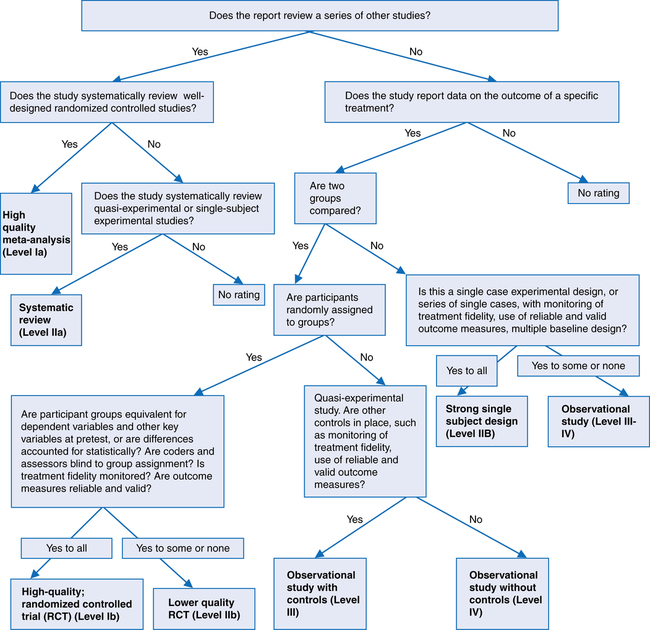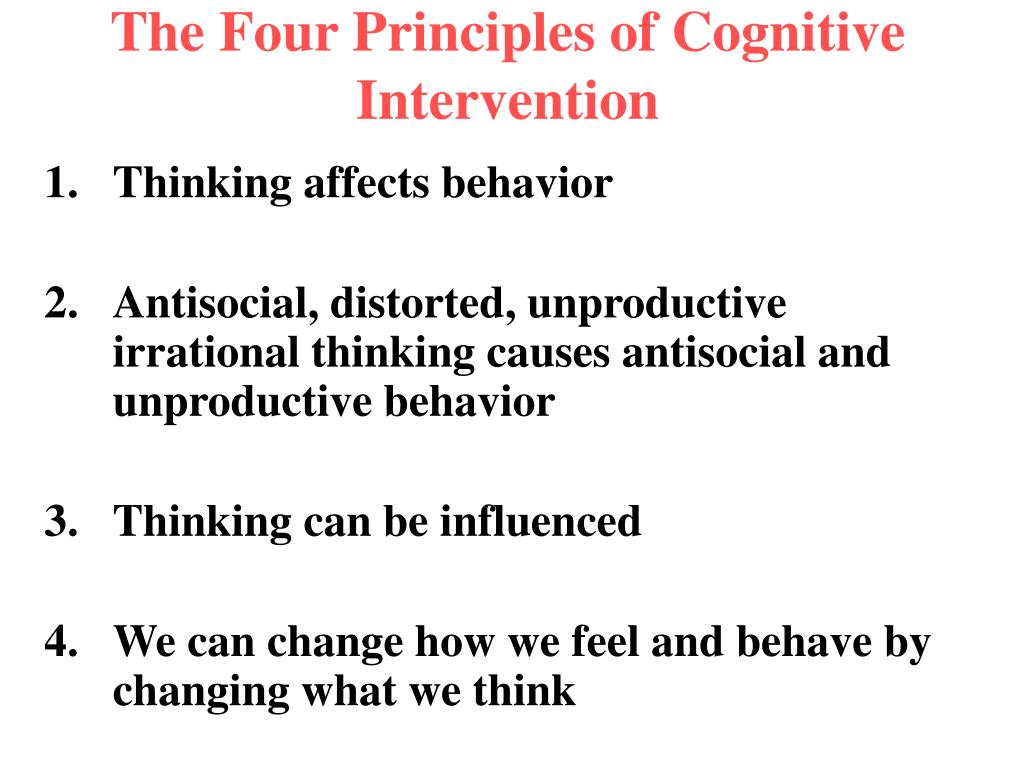



There is no magic formula for creating more time in the school day, so it’s important for teachers to make the best use of the time they have. Teachers consistently report that their greatest challenge is finding time to reach all students. Principle 4: Organize the Classroom Routine and Environment
#Principle of intervention how to#
Instead of telling students how to do something, explicit instruction requires that students perform a skill or engage in dialogue about or explanation of that skill. Intensive instruction also involves the students actively responding rather than passively learning. Intervention activities should be focused rather than merely touching on a concept or providing exposure to an idea. Learning is most effective when students are fully engaged in the task. The teacher makes it clear what is being taught, models and explains the task, provides opportunities for students to practice the skill, and provides specific feedback.
Explicit instruction occurs when the teacher provides direct and focused instruction. The most effective reading intervention programs occur daily or several times per week and are long enough to allow for concept development and practice with skills. .jpg) Systematic intervention means that intervention frequently and routinely happens and follows a well-defined sequence. There are two key qualities of a good intervention program for readers who are at risk: Such a program is systematic and explicit. Principle 3: Provide Systematic and Explicit Reading Intervention Using that information, teachers can then target interventions to meet those specific skill needs for each student. Screening and assessment helps give teachers a complete understanding of where their students struggle. Teachers chart the scores and use this information to adjust instruction or individual goals as students progress. These assessments consist of short tasks that represent the identified area of need in the continuum of reading skills. Progress monitoring assessment provides frequent checks of students’ progress toward specified goals. The teacher conducts individualized assessment covering specific developmental reading skills to determine areas of need for individual students, which helps the teacher better understand why a student is struggling. Diagnostic assessment is then conducted for these students. At the beginning and midpoint of the school year, teachers conduct universal screening, assessing all students and examining the data to see which students are failing to meet specified benchmarks. Screening is used to catch struggling readers early. Teachers implementing a tiered intervention model should use three kinds of assessment to make critical decisions about reading intervention: Ongoing assessment is essential for making important intervention decisions. ( Interventions for Reading Success offers guidance on how to teach the Big Ideas through research-based activities.) Principle 2: Use Assessment to Guide Intervention It’s critically important to provide systematic and explicit instruction in these “Big Ideas” during reading intervention for struggling readers. As students move beyond the beginning level, they learn more complex decoding concepts and further develop their fluency, vocabulary, and comprehension. Principle 1: Focus on the Big Ideas of Readingįive essential components of reading instruction should be taught in the early grades: phonological awareness, alphabetic principle, fluency with connected text, vocabulary development, and comprehension. Dimino, & Michelle Pearlman Windmueller, this post provides a preliminary guide for teachers developing supplemental instruction to meet the needs of individual students. Excerpted and adapted from Interventions for Reading Success, Second Edition, by Diane Haager, Joseph A. Today’s post reviews five key principles for implementing an effective reading intervention program for students in Grades K–3. Early identification and intervention is the key to preventing the long-term negative effects of reading difficulties-and reading intervention should be available in the early grades to any students who need it. When early reading problems go undetected and unaddressed in the first years of school, students often fall so far behind that they never catch up to their peers.
Systematic intervention means that intervention frequently and routinely happens and follows a well-defined sequence. There are two key qualities of a good intervention program for readers who are at risk: Such a program is systematic and explicit. Principle 3: Provide Systematic and Explicit Reading Intervention Using that information, teachers can then target interventions to meet those specific skill needs for each student. Screening and assessment helps give teachers a complete understanding of where their students struggle. Teachers chart the scores and use this information to adjust instruction or individual goals as students progress. These assessments consist of short tasks that represent the identified area of need in the continuum of reading skills. Progress monitoring assessment provides frequent checks of students’ progress toward specified goals. The teacher conducts individualized assessment covering specific developmental reading skills to determine areas of need for individual students, which helps the teacher better understand why a student is struggling. Diagnostic assessment is then conducted for these students. At the beginning and midpoint of the school year, teachers conduct universal screening, assessing all students and examining the data to see which students are failing to meet specified benchmarks. Screening is used to catch struggling readers early. Teachers implementing a tiered intervention model should use three kinds of assessment to make critical decisions about reading intervention: Ongoing assessment is essential for making important intervention decisions. ( Interventions for Reading Success offers guidance on how to teach the Big Ideas through research-based activities.) Principle 2: Use Assessment to Guide Intervention It’s critically important to provide systematic and explicit instruction in these “Big Ideas” during reading intervention for struggling readers. As students move beyond the beginning level, they learn more complex decoding concepts and further develop their fluency, vocabulary, and comprehension. Principle 1: Focus on the Big Ideas of Readingįive essential components of reading instruction should be taught in the early grades: phonological awareness, alphabetic principle, fluency with connected text, vocabulary development, and comprehension. Dimino, & Michelle Pearlman Windmueller, this post provides a preliminary guide for teachers developing supplemental instruction to meet the needs of individual students. Excerpted and adapted from Interventions for Reading Success, Second Edition, by Diane Haager, Joseph A. Today’s post reviews five key principles for implementing an effective reading intervention program for students in Grades K–3. Early identification and intervention is the key to preventing the long-term negative effects of reading difficulties-and reading intervention should be available in the early grades to any students who need it. When early reading problems go undetected and unaddressed in the first years of school, students often fall so far behind that they never catch up to their peers.





.jpg)


 0 kommentar(er)
0 kommentar(er)
